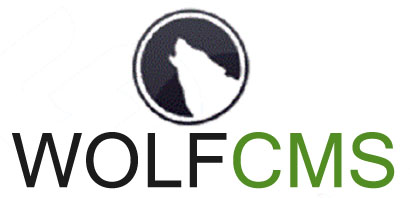
In this tutorial, we will show you how to install Wolf CMS on CentOS 7. For those of you who didn’t know, Wolf CMS is a content management system and is Free Software published under the GNU General Public License v3. Wolf CMS is written in the PHP programming language. Wolf CMS is a fork of Frog CMS.
This article assumes you have at least basic knowledge of Linux, know how to use the shell, and most importantly, you host your site on your own VPS. The installation is quite simple. I will show you the step-by-step installation of Wolf CMS in CentOS 7.
Prerequisites
- A server running one of the following operating systems: CentOS 7.
- It’s recommended that you use a fresh OS install to prevent any potential issues.
- SSH access to the server (or just open Terminal if you’re on a desktop).
- A
non-root sudo useror access to theroot user. We recommend acting as anon-root sudo user, however, as you can harm your system if you’re not careful when acting as the root.
Install Wolf CMS on CentOS 7
Step 1. First of all, make sure that all packages are up to date.
yum -y update
Step 2. Install the LAMP server and include some PHP extensions.
We will be installing Apache with yum, which is the default package manager for CentOS 7:
yum install httpd
Installing MariaDB:
yum install mariadb mariadb-server mysql
Install PHP and a few PHP modules:
yum install php php-mysql php-common
Start the LAMP services and enable it to start on system start-up using:
### Apache ### systemctl start httpd systemctl enable httpd ### MariaDB ### systemctl start mariadb systemctl enable mariadb
Step 3. Configuring MariaDB for Wolf CMS.
By default, MariaDB is not hardened. You can secure MariaDB using the mysql_secure_installation script. you should read and below each step carefully which will set the root password, remove anonymous users, disallow remote root login, and remove the test database and access to secure MySQL:
mysql_secure_installation
Next, we will need to log in to the MariaDB console and create a database for the Wolf CMS. Run the following command:
mysql -u root -p
This will prompt you for a password, so enter your MariaDB root password and hit Enter. Once you are logged in to your database server you need to create a database for Wolf CMS installation:
CREATE DATABASE wolfcms CHARACTER SET utf8 COLLATE utf8_unicode_ci; CREATE USER 'wolfcmsuser'@'localhost' IDENTIFIED BY 'PASSWORD'; GRANT ALL PRIVILEGES ON `wolfcms`.* TO 'wolfcmsuser'@'localhost'; FLUSH PRIVILEGES;
Step 4. Install Wolf CMS.
Download the latest stable version of Wolf CMS, At the moment of writing this article, it is version 0.8.2. Run the following command:
wget https://bitbucket.org/wolfcms/wolf-cms-downloads/downloads/wolfcms-0.8.2.zip unzip wolfcms-0.8.2.zip -d /var/www/html/
We will need to change some folders permissions:
chown -R apache:apache wolfcms
Step 5. Configure Apache webserver.
Create a new VirtualHost for Wolf CMS with your favorite text editor in the following commands:
nano /etc/httpd/conf.d/vhosts.conf IncludeOptional vhosts.d/*.conf
Then configure the file as shown below:
### nano /etc/httpd/vhosts.d/yourdomain.tld.conf <VirtualHost YOUR_SERVER_IP:80> ServerAdmin webmaster@yourdomain.tld DocumentRoot "/var/www/html/wolfcms" ServerName yourdomain.tld ServerAlias www.yourdomain.tld ErrorLog "/var/log/httpd/yourdomain.tld-error_log" CustomLog "/var/log/httpd/yourdomain.tld-access_log" combined <Directory "/var/www/html/wolfcms/"> DirectoryIndex index.html index.php Options FollowSymLinks AllowOverride All Require all granted </Directory> </VirtualHost>
Edit the php.ini configuration file:
### nano /etc/php.ini magic_quotes_gpc = Off
Restart Apache for the changes to take effect:
systemctl restart httpd
Step 6. Accessing Wolf CMS.
Wolf CMS will be available on HTTP port 80 by default. Open your favorite browser and navigate to http://yourdomain.com or http://your-server-ip and complete the required steps to finish the installation. If you are using a firewall, please open port 80 to enable access to the control panel. After the setup is completed, delete the /install and /docs directories and remove the write permissions for the config.php file.
Congratulations! You have successfully installed Wolf CMS. Thanks for using this tutorial for installing the Wolf content management system on CentOS 7 system. For additional help or useful information, we recommend you to check the official Wolf CMS website.